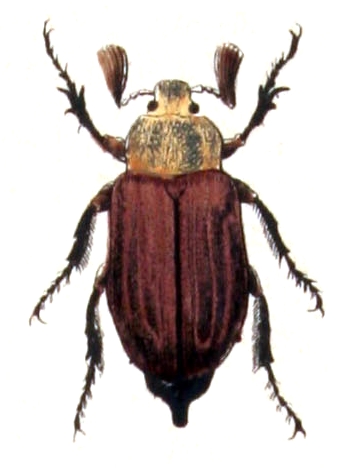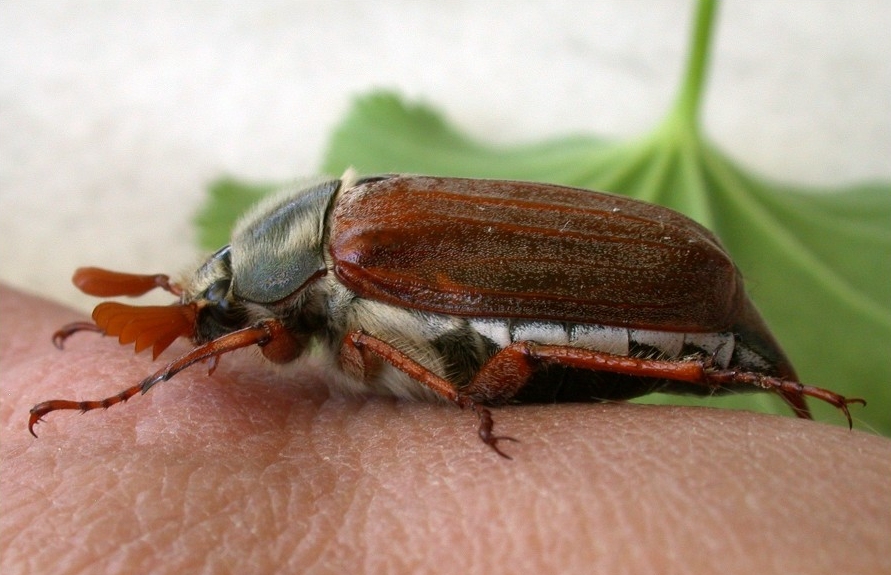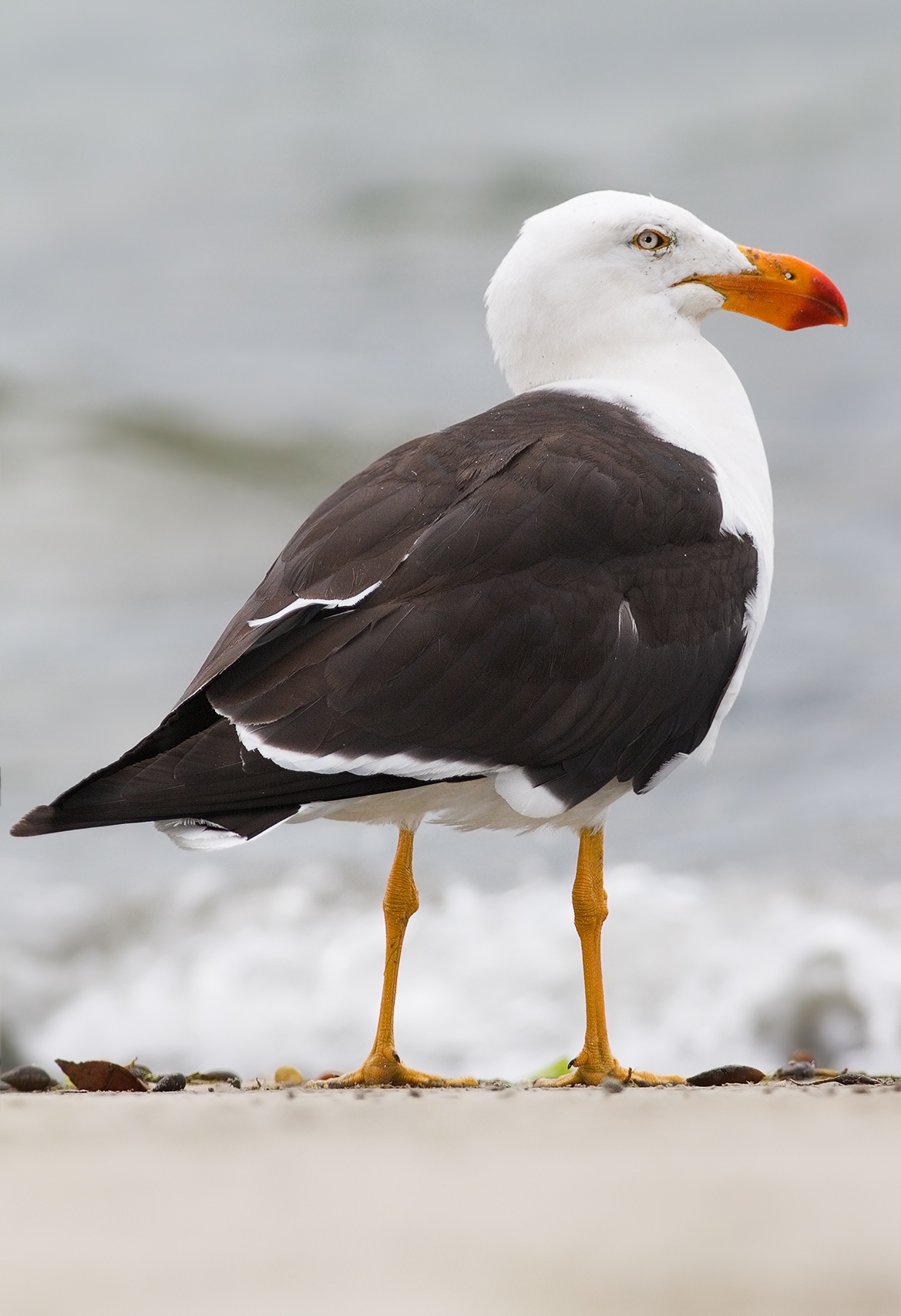|
Maybug
The common cockchafer (''Melolontha melolontha''), also colloquially known as the Maybug, Maybeetle, or doodlebug, is a species of scarab beetle belonging to the genus ''Melolontha.'' It is native to Europe, and it is one of several closely-related and morphologically similar species of ''Melolontha'' called cockchafers, alongside ''Melolontha hippocastani'' (the forest cockchafer)''.'' The cockchafer develops via metamorphosis, in which the beetle undergoes stages of eggs, larvae, pupae and adults. The mating behaviour is controlled by pheromones. The males usually swarm during the mating season while the females stay put and feed on leaves. The leaves release green leaf volatiles when they are fed on by females, which the male can sense and thus locate the female for mating opportunity. The larvae use both the plant volatiles and CO2 to locate the plant root for food. This species is an important and nutritious food source for many species. The adults and larvae feed on plant ... [...More Info...] [...Related Items...] OR: [Wikipedia] [Google] [Baidu] |
Elytron
An elytron (; ; : elytra, ) is a modified, hardened forewing of beetles (Coleoptera), though a few of the true bugs (Hemiptera) such as the family Schizopteridae are extremely similar; in true bugs, the forewings are called hemelytra (sometimes alternatively spelled as "hemielytra"), and in most species only the basal half is thickened while the apex is membranous, but when they are entirely thickened the condition is referred to as "coleopteroid". An elytron is sometimes also referred to as a shard. Description The elytra primarily serve as protective wing-cases for the hindwings underneath, which are used for flying. To fly, a beetle typically opens the elytra and then extends the hindwings, flying while still holding the elytra open, though many beetles in the families Scarabaeidae and Buprestidae can fly with the elytra closed (e.g., most Cetoniinae; ). In a number of groups, the elytra are reduced to various degrees, (e.g., the beetle families Staphylinidae and Ripiphorid ... [...More Info...] [...Related Items...] OR: [Wikipedia] [Google] [Baidu] |
Melolontha
''Melolontha'' is a genus of beetles in the family Scarabaeidae. The European cockchafers belong to this genus. Taxonomy Linnaeus called the European cockchafer ''Scarabaeus melolontha''. Étienne Louis Geoffroy used ''Melolontha'' as a genus name (1762), but his book has been suppressed by the International Commission of Zoological Nomenclature, and the authority for the name is the later (1775) publication by Johan Christian Fabricius. Species The following is a list of species within the genus ''Melolontha'': *'' Melolontha aceris'' Faldermann, 1835 *'' Melolontha afflicta'' Ballion, 1870 *'' Melolontha albida'' Frivaldszky, 1835 *''Melolontha anita'' Reitter, 1902 *'' Melolontha argus'' Burmeister 1855 *'' Melolontha bifurcata'' (Brenske, 1896) *''Melolontha chinensis'' ( Guerin, 1838) *''Melolontha ciliciensis'' Petrovitz *''Melolontha flabellata'' Sharp, 1876 *''Melolontha frater'' Arrow, 1913 – Indonesia *''Melolontha fuscotestacea'' Kraatz, 1887 *''Melolontha g ... [...More Info...] [...Related Items...] OR: [Wikipedia] [Google] [Baidu] |
Cockchafer
The common cockchafer (''Melolontha melolontha''), also colloquially known as the Maybug, Maybeetle, or doodlebug, is a species of scarab beetle belonging to the genus '' Melolontha.'' It is native to Europe, and it is one of several closely-related and morphologically similar species of ''Melolontha'' called cockchafers, alongside '' Melolontha hippocastani'' (the forest cockchafer)''.'' The cockchafer develops via metamorphosis, in which the beetle undergoes stages of eggs, larvae, pupae and adults. The mating behaviour is controlled by pheromones. The males usually swarm during the mating season while the females stay put and feed on leaves. The leaves release green leaf volatiles when they are fed on by females, which the male can sense and thus locate the female for mating opportunity. The larvae use both the plant volatiles and CO2 to locate the plant root for food. This species is an important and nutritious food source for many species. The adults and larvae feed on pl ... [...More Info...] [...Related Items...] OR: [Wikipedia] [Google] [Baidu] |
Sexual Dimorphism
Sexual dimorphism is the condition where sexes of the same species exhibit different Morphology (biology), morphological characteristics, including characteristics not directly involved in reproduction. The condition occurs in most dioecy, dioecious species, which consist of most animals and some plants. Differences may include secondary sex characteristics, size, weight, color, markings, or behavioral or cognitive traits. Male-male reproductive competition has evolved a diverse array of sexually dimorphic traits. Aggressive utility traits such as "battle" teeth and blunt heads reinforced as battering rams are used as weapons in aggressive interactions between rivals. Passive displays such as ornamental feathering or song-calling have also evolved mainly through sexual selection. These differences may be subtle or exaggerated and may be subjected to sexual selection and natural selection. The opposite of dimorphism is ''monomorphism'', when both biological sexes are phenotype, ... [...More Info...] [...Related Items...] OR: [Wikipedia] [Google] [Baidu] |
European Mole
The European mole (''Talpa europaea'') is a mammal of the order Eulipotyphla. It is also known as the common mole and the northern mole. This mole lives in a tunnel system, which it constantly extends. It uses these tunnels to hunt its prey. Under normal conditions, the displaced earth is pushed to the surface, resulting in the characteristic molehills. It is an omnivore that feeds mainly on earthworms, but also on insects, centipedes and mammals such as rodents and other moles. Its saliva contains toxins which paralyze earthworms in particular. Taxonomy The Aquitanian mole (''T. aquitania'') was formerly considered conspecific, but was described as a distinct species in 2017. Distribution The European mole has a wide range throughout Europe and westernmost Asia, being found as far north as the United Kingdom and southern Scandinavia, as far south as northern Greece, and as far east as western Siberia. It is the only mole species in most of this range. The Loire River ... [...More Info...] [...Related Items...] OR: [Wikipedia] [Google] [Baidu] |
Starling
Starlings are small to medium-sized passerine (perching) birds known for the often dark, glossy iridescent sheen of their plumage; their complex vocalizations including mimicking; and their distinctive, often elaborate swarming behavior, known as murmuration. All members of the family ''Sturnidae'', commonly called sturnids, are known collectively as starlings. The Sturnidae are named for the genus '' Sturnus'', which in turn comes from the Latin word for starling, ''sturnus''. The family contains 128 species which are divided into 36 genera. Many Asian species, particularly the larger ones, are called mynas, and many African species are known as glossy starlings because of their iridescent plumage. Starlings are native to Europe, Asia, and Africa, as well as northern Australia and the islands of the tropical Pacific. Several European and Asian species have been introduced to these areas, as well as North America, Hawaii, and New Zealand, where they generally compete for ... [...More Info...] [...Related Items...] OR: [Wikipedia] [Google] [Baidu] |
Crow
A crow is a bird of the genus ''Corvus'', or more broadly, a synonym for all of ''Corvus''. The word "crow" is used as part of the common name of many species. The related term "raven" is not linked scientifically to any certain trait but is rather a general grouping for larger-sized species of ''Corvus''. The collective name for a group of crows is a "murder". Species * ''Corvus albus'' – Pied crow (Central African coasts to southern Africa) * ''Corvus bennetti'' – Little crow (bird), Little crow (Australia) * ''Corvus brachyrhynchos'' – American crow (United States, southern Canada, northern Mexico) * ''Corvus capensis'' – Cape crow or Cape rook (Eastern and southern Africa) * ''Corvus cornix'' – Hooded crow (Northern and Eastern Europe and Northern Africa and Middle East) * ''Corvus corone'' – Carrion crow (Europe and eastern Asia) *''Corvus culminatus'' – Indian jungle crow (South Asia) * ''Corvus edithae'' – Somali crow or dwarf raven (Eastern Africa) * '' ... [...More Info...] [...Related Items...] OR: [Wikipedia] [Google] [Baidu] |
Gull
Gulls, or colloquially seagulls, are seabirds of the subfamily Larinae. They are most closely related to terns and skimmers, distantly related to auks, and even more distantly related to waders. Until the 21st century, most gulls were placed in the genus ''Larus'', but that arrangement is now considered polyphyletic, leading to the resurrection of several genera. An older name for gulls is mews; this still exists in certain regional English dialects and is cognate with German , Danish ', Swedish ', Dutch ', Norwegian ', and French '. Gulls are usually grey or white, often with black markings on the head or wings. They normally have harsh wailing or squawking calls, stout bills, and webbed feet. Most gulls are ground-nesting piscivores or carnivores which take live food or scavenge opportunistically, particularly the ''Larus'' species. Live food often includes crustaceans, molluscs, fish and small birds. Gulls have unhinging jaws that provide the flexibility to consume large ... [...More Info...] [...Related Items...] OR: [Wikipedia] [Google] [Baidu] |
Welsh Language
Welsh ( or ) is a Celtic languages, Celtic language of the Brittonic languages, Brittonic subgroup that is native to the Welsh people. Welsh is spoken natively in Wales by about 18% of the population, by some in England, and in (the Welsh colony in Chubut Province, Argentina). It is spoken by smaller numbers of people in Canada and the United States descended from Welsh immigrants, within their households (especially in Nova Scotia). Historically, it has also been known in English as "British", "Cambrian", "Cambric" and "Cymric". The Welsh Language (Wales) Measure 2011 gave the Welsh language official status in Wales. Welsh and English are ''de jure'' official languages of the Senedd (the Welsh parliament), with Welsh being the only ''de jure'' official language in any part of the United Kingdom, with English being merely ''de facto'' official. According to the 2021 United Kingdom census, 2021 census, the Welsh-speaking population of Wales aged three or older was 538,300 ( ... [...More Info...] [...Related Items...] OR: [Wikipedia] [Google] [Baidu] |
Swarming
Swarm behaviour, or swarming, is a collective animal behaviour, collective behaviour exhibited by entities, particularly animals, of similar size which aggregate together, perhaps milling about the same spot or perhaps moving ''en masse'' or animal migration, migrating in some direction. It is a highly interdisciplinary topic. As a term, ''swarming'' is applied particularly to insects, but can also be applied to any other entity or animal that exhibits swarm behaviour. The term ''flocking (behavior), flocking'' or ''murmuration'' can refer specifically to swarm behaviour in birds, ''herd behaviour, herding'' to refer to swarm behaviour in tetrapods, and shoaling and schooling, ''shoaling'' or ''schooling'' to refer to swarm behaviour in fish. Phytoplankton also gather in huge swarms called algal bloom, ''blooms'', although these organisms are algae and are not self-propelled the way animals are. By extension, the term "swarm" is applied also to inanimate entities which exhibit ... [...More Info...] [...Related Items...] OR: [Wikipedia] [Google] [Baidu] |
Pupa
A pupa (; : pupae) is the life stage of some insects undergoing transformation between immature and mature stages. Insects that go through a pupal stage are holometabolous: they go through four distinct stages in their life cycle, the stages thereof being egg, larva, pupa, and imago. The processes of entering and completing the pupal stage are controlled by the insect's hormones, especially juvenile hormone, prothoracicotropic hormone, and ecdysone. The act of becoming a pupa is called pupation, and the act of emerging from the pupal case is called eclosion or emergence. The pupae of different groups of insects have different names such as ''chrysalis'' for the pupae of butterflies and ''tumbler'' for those of the mosquito family. Pupae may further be enclosed in other structures such as cocoons, nests, or shells. Position in life cycle The pupal stage follows the larval stage, or in some cases a prepupal stage, and precedes adulthood ('' imago'') in insects with compl ... [...More Info...] [...Related Items...] OR: [Wikipedia] [Google] [Baidu] |









